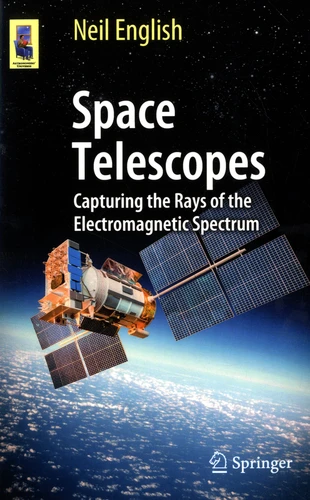Space Telescopes. Capturing the Rays of the Electromagnetic Spectrum
Par :Formats :
- Paiement en ligne :
- Livraison à domicile ou en point Mondial Relay indisponible
- Retrait Click and Collect en magasin gratuit
- Réservation en ligne avec paiement en magasin :
- Indisponible pour réserver et payer en magasin
- Nombre de pages312
- PrésentationBroché
- FormatGrand Format
- Poids0.51 kg
- Dimensions15,5 cm × 23,5 cm × 2,0 cm
- ISBN978-3-319-27812-4
- EAN9783319278124
- Date de parution01/01/2017
- ÉditeurSpringer Nature
Résumé
Space telescopes are among humankind's greatest scientific achievements of the last fifty years. This book describes how the telescopes were designed to study distant stars and the wonders of the Solar System. English also explores how important telescopes were built and launched, as well as the essential dada they have collected. Exactly how these telescopes were built and launched and the data they provided is explored.
Only certain kinds of radiation can penetrate our planet's atmosphere, which limits what we can observe. But with space telescopes all this changed. We now have the means to "see" beyond Earth using ultraviolet, microwave, and infrared rays, X-rays and gamma rays. In this book we meet the pioneers and the telescopes that were built around their ideas. This book looks at space telescopes not simply chronologically but also in order of the electromagnetic spectrum, making it possible to understand better why they were made.
Only certain kinds of radiation can penetrate our planet's atmosphere, which limits what we can observe. But with space telescopes all this changed. We now have the means to "see" beyond Earth using ultraviolet, microwave, and infrared rays, X-rays and gamma rays. In this book we meet the pioneers and the telescopes that were built around their ideas. This book looks at space telescopes not simply chronologically but also in order of the electromagnetic spectrum, making it possible to understand better why they were made.
Space telescopes are among humankind's greatest scientific achievements of the last fifty years. This book describes how the telescopes were designed to study distant stars and the wonders of the Solar System. English also explores how important telescopes were built and launched, as well as the essential dada they have collected. Exactly how these telescopes were built and launched and the data they provided is explored.
Only certain kinds of radiation can penetrate our planet's atmosphere, which limits what we can observe. But with space telescopes all this changed. We now have the means to "see" beyond Earth using ultraviolet, microwave, and infrared rays, X-rays and gamma rays. In this book we meet the pioneers and the telescopes that were built around their ideas. This book looks at space telescopes not simply chronologically but also in order of the electromagnetic spectrum, making it possible to understand better why they were made.
Only certain kinds of radiation can penetrate our planet's atmosphere, which limits what we can observe. But with space telescopes all this changed. We now have the means to "see" beyond Earth using ultraviolet, microwave, and infrared rays, X-rays and gamma rays. In this book we meet the pioneers and the telescopes that were built around their ideas. This book looks at space telescopes not simply chronologically but also in order of the electromagnetic spectrum, making it possible to understand better why they were made.


